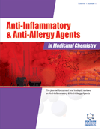
Full text loading...
We use cookies to track usage and preferences.I Understand
Plant-based repellents have been used for generations as personal protection against mosquitoes. Ethnobotanical studies provide valuable knowledge for developing natural products. Commercial repellents with plant-based ingredients are popular, but insufficient studies follow Pesticide Evaluation Scheme WHO guidelines. Further standardized studies are needed to evaluate repellent compounds and develop high-repellency and safe products. Essential Oils (EOs) from aromatic plants have gained popularity as low-risk insecticides due to their low toxicity and short environmental persistence. These plant-derived EOs, produced through steam distillation, have repellent, insecticidal, and growth-reducing effects on various insects. They control phytophagous insects, bite flies, and home and garden insects. US registration is the main hurdle for new EOs. This review explores the use of essential oils from plants as a natural repellent, focusing on their effectiveness and synergistic effects. Essential oils are volatile mixtures of hydrocarbons with diverse functional groups, and their effectiveness is linked to monoterpenes and sesquiterpenes. Synergistic effects can improve their effectiveness, and the use of other natural products, like vanillin, can increase protection time. Cymbopogon spp., Ocimum spp., and Eucalyptus spp. are among the most promising plant families.

Article metrics loading...

Full text loading...
References


Data & Media loading...

